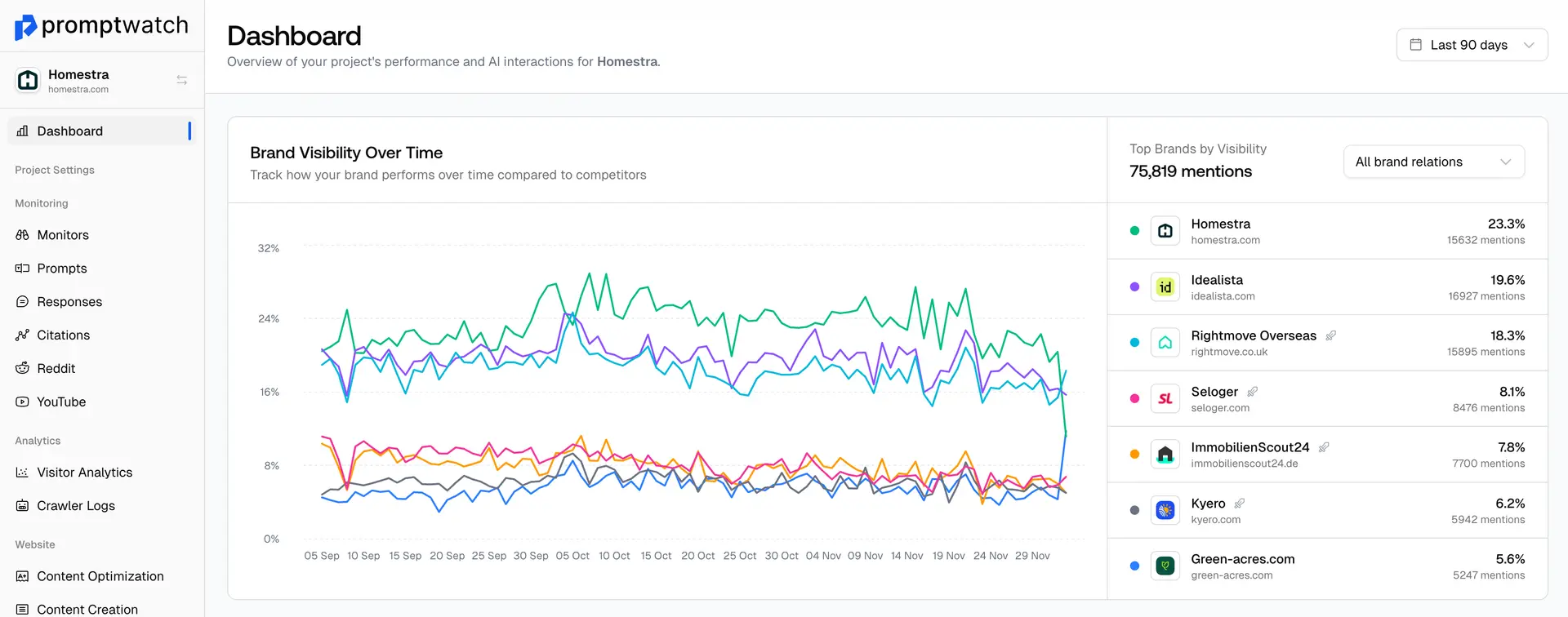Free Robots.txt Generator: Control AI Crawler Access
Basic Configuration
Time between requests for crawlers that support it
/admin//private//tmp/Paths must start and end with /
Crawler Control
AI Crawlers
Trains ChatGPT models
Powers ChatGPT web search
Fetches shared links
Claude AI crawler
Claude training data
Fresh web content
AI search index
Gemini AI
Alexa & recommendations
Apple AI training
TikTok's AI
Private AI answers
Enterprise LLMs
Meta AI crawler
French AI company
Search Engines
Google Search
Google Images
Google Mobile Search
Microsoft Bing
Generated robots.txt
Quick Tips for Robots.txt Best Practices
Test Before Deploying
Always test your robots.txt in Google Search Console before going live
Monitor AI Crawler Activity
Track which AI bots visit your site and how often
Update Regularly
Review your robots.txt quarterly as new AI crawlers emerge
Balance Access and Protection
Allow AI crawlers for visibility while protecting sensitive content
Consider Crawl Delay
Set appropriate delays to manage server resources
Include Your Sitemap
Help crawlers discover all your important content
Pro tip: Combine your robots.txt with an llms.txt file for complete AI optimization. While robots.txt controls access, llms.txt provides context about your business for AI systems.
Why Control AI Crawler Access?
As AI becomes the primary way users discover information, controlling which AI systems can access your content is crucial. While allowing AI crawlers can increase your visibility in AI-generated responses, you may want to block certain crawlers to protect proprietary content, reduce server load, or maintain control over how your content is used in AI training.
Content Control
Decide which AI systems can use your content for training or real-time responses
AI Visibility
Allow helpful AI crawlers to increase your brand mentions in AI responses
Server Resources
Manage crawler traffic to optimize server performance and reduce costs
Important Notes & Resources
- • Some crawlers (like Perplexity-User) may ignore robots.txt when fetching user-requested pages
- • Robots.txt is publicly visible - don't include sensitive paths that reveal hidden content
- • Not all bots respect robots.txt - it's a request, not enforcement
- • Changes may take days or weeks to be recognized by all crawlers
Learn more: Read our comprehensive guide to AI crawler user agents for detailed insights on crawler behavior, optimization strategies, and real-world success stories.
Frequently Asked Questions
What is a robots.txt file?
A robots.txt file is a text file placed in your website's root directory that tells web crawlers which pages or sections of your site they can or cannot access. It's part of the Robots Exclusion Protocol (REP) and is the first file crawlers check when visiting your website.
Why should I control AI crawler access?
Controlling AI crawler access is crucial for several reasons:
- Content Control: Decide which AI systems can use your content for training or real-time responses
- Resource Management: AI crawlers can consume significant server resources - manage your bandwidth
- Competitive Advantage: Control how your proprietary content is used by AI systems
- AI Visibility: Allowing the right crawlers can increase your brand mentions in AI responses
Learn more about why you might be invisible in AI search and how to fix it.
Which AI crawlers should I allow?
For maximum visibility, allow GPTRobotIcon (OpenAI), ClaudeRobotIcon (Anthropic), and PerplexityRobotIcon. B2B companies should focus on professional AI platforms like Claude and Perplexity. E-commerce sites should allow shopping-focused bots like Amazonbot and Google-Extended.
How does robots.txt affect my AI search visibility?
Your robots.txt file directly impacts how AI systems understand and recommend your business. Blocking AI crawlers means your content won't be included in AI training data or real-time responses. This is part of a larger strategy called Generative Engine Optimization (GEO), which focuses on optimizing for AI-powered search experiences rather than traditional search engines.
What's the difference between blocking Googlebot and Google-Extended?
Googlebot is Google's traditional search crawler that indexes content for Google Search. Google-Extended is specifically for Google's AI products like Gemini. You can block Google-Extended while still allowing Googlebot, which means your site will appear in Google Search but won't be used to train or power Google's AI models.
How often do AI crawlers visit websites?
According to our research, AI crawlers visit approximately 1 in 4 websites daily. The frequency depends on your site's authority, update frequency, and content type. Popular AI crawlers like GPTRobotIcon generate hundreds of millions of requests monthly. Learn more about AI crawler statistics and behavior.
Do I need both robots.txt and an llms.txt file?
While robots.txt controls crawler access, llms.txt provides structured information about your business specifically for AI systems. They serve different purposes: robots.txt is about access control, while llms.txt is about providing context. For optimal AI visibility, we recommend using both.
How can I test if my robots.txt is working correctly?
You can test your robots.txt file in several ways:
- Use Google Search Console's robots.txt Tester tool
- Visit yourwebsite.com/robots.txt to ensure it's accessible
- Check your server logs for crawler activity
- Use tools like Promptwatch to monitor AI crawler visits in real-time
Monitor Your AI Search Performance
Track how ChatGPT, Claude, Perplexity, and Gemini mention your brand in real-time. Get alerts when AI assistants recommend competitors instead of you. Optimize your AI search presence with data-driven insights.
